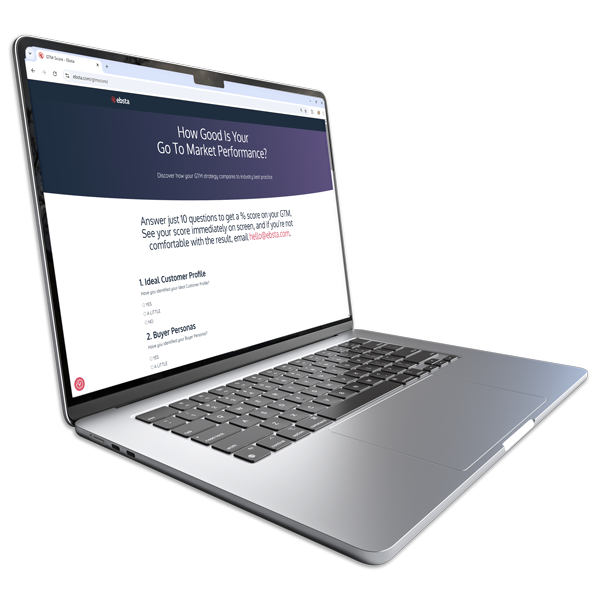
What Helps Top Performers Drive More Expansion?
In the fast-paced world of tech and SaaS, customer retention isn’t enough – expansion is the real growth driver.
Companies that master ongoing engagement don’t just keep customers happy; they unlock new revenue streams through upsells, cross-sells, and renewals. The data is clear: customers with an engagement score of 30 or below are only 25% likely to expand, while those with a score above 80 are 75% likely to do so.
This means that a highly engaged customer is three times more likely to grow their relationship with your business. According to our 2025 GTM Benchmarks Report, sustained engagement increases the likelihood of expansion opportunities by 201%.
But what separates top-performing tech companies from the rest? How do they create engagement strategies that consistently drive expansion revenue? Let’s break it down.
Why ongoing customer engagement matters
Too often, companies focus on acquiring new customers while neglecting the ones they already have. The reality? Existing customers are your best source of future revenue. Engaged customers are not just more loyal; they spend more, advocate for your brand, and renew at higher rates.
Here’s why ongoing engagement is a game-changer:
1. Identifies growth opportunities
Regular interactions with customers provide insight into their evolving needs. As their business scales or faces new challenges, proactive engagement helps identify areas where your product can provide additional value.
- Are they expanding into new markets?
- Are they hiring more employees who need access to your platform?
- Are they struggling with adoption of a particular feature?
The more you know, the better positioned you are to propose relevant solutions and expand your footprint within their organization.
2. Strengthens loyalty & reduces churn
Engaged customers are less likely to explore competitors because they feel valued and supported. Consistent, meaningful interactions reinforce trust, ensuring that when renewal time comes, your product is the obvious choice.
A disengaged customer, on the other hand, may drift away without even telling you why. By the time they consider leaving, it’s often too late to change their mind.
3. Proactively manages accounts & prevents issues
Tech and SaaS products are often complex, and issues can arise if customers don’t fully understand how to use them. Continuous engagement ensures that customers:
- Know how to maximize the value of your product.
- Receive proactive support before frustrations escalate.
- Feel like a priority, not just another account.
Without engagement, customers only reach out when there’s a problem. And by then, the relationship is already strained.
The correlation between engagement & expansion
The data shows a direct link between customer engagement and revenue expansion.
According to Mark Ma, Data Scientist at Ebsta, “We see a strong correlation between engagement and expansion—customers who actively interact with your team, consume your content, and participate in business reviews are far more likely to renew and invest in additional solutions.”
This aligns with the engagement score findings:
📉 Low engagement (Score ≤30) → 25% chance of expansion
📈 High engagement (Score ≥80) → 75% chance of expansion
Simply put: the more engaged a customer is, the more likely they are to grow with you.
How top performers drive expansion through engagement
Now that we know engagement fuels growth, how do top-performing SaaS companies build a scalable engagement strategy? Here are some proven tactics:
1. Implement regular QBRs (Quarterly Business Reviews)
A QBR isn’t just a check-in; it’s a strategic conversation that:
- Shows customers the tangible ROI of your product.
- Uncovers challenges that might lead to churn.
- Identifies opportunities for upsells or expanded usage.
Companies that run structured QBRs with key stakeholders see higher renewal rates and faster expansion cycles.
2. Leverage customer data & engagement scoring
Use real-time data to measure engagement levels. Look at:
- Product usage patterns
- Support interactions
- Webinar/event participation
- Account activity (logins, feature adoption)
If an account’s engagement score drops below a healthy threshold, it’s a sign that intervention is needed. Proactively reach out before disengagement leads to churn.
3. Build a customer community & education hub
Customers who feel connected to your brand are more likely to stay and expand.
- Offer exclusive webinars, training, and industry insights.
- Encourage participation in online forums or customer Slack groups.
- Provide early access to new features for engaged users.
These initiatives keep customers engaged beyond their initial purchase.
4. Create a dedicated expansion strategy
Don’t leave expansion to chance. Build a playbook for your customer success and sales teams. This should include:
- Triggers for when to suggest an upsell or cross-sell.
- Messaging that highlights additional value.
- Case studies that show how similar customers benefited from an expanded product suite.
Example:
If a customer is heavily using Feature A, but hasn’t activated Feature B (which complements it), trigger an outreach campaign showcasing the benefits of using both together.
5. Personalize the customer journey
Customers don’t want generic interactions. Use AI and automation to personalize:
- Onboarding experiences
- Renewal reminders
- Product recommendations
The more tailored the experience, the higher the engagement and expansion rates.
Summary of how top performers drive customer expansion
The numbers don’t lie – engaged customers expand, and disengaged customers churn. For tech and SaaS companies, customer engagement is not just about retention; it’s the foundation for long-term revenue growth.
By focusing on proactive engagement, strategic QBRs, customer education, and data-driven expansion tactics, companies can:
- Increase expansion opportunities by 201%
- Boost renewal rates
- Drive predictable, scalable growth
Control engagement, and you’ll control your expansion revenue. For guidance on how full-cycle selling could fit into your expansion strategy, read our article ‘Why the Return to Full-Cycle Sales Matters: A Lot‘.
 |
Get Your GTM Score |
|---|---|
Will you get 100%, 47% or something lower? Take 3 minutes to answer 10 questions and get a percentage score plus AI-generated advice about your GTM performance. www.ebsta.com/gtmscore |
|
Table of Contents
Share this article
Sign up for Insights
Learn from the brightest minds how to predictably and efficiently grow revenue.
Related Content
Why 52% of New Revenue Now Comes From Existing Customers
In this episode of Revenue Insights, host Guy Rubin sits down with Ben O’Mathuin, Principal Consultant at Customer Lift, to explore how companies can transform Customer Success (CS) from a retention function into a strategic revenue driver. Discover why traditional QBRs are becoming obsolete, how to create meaningful C-suite engagement, and the practical frameworks for…
The Essential Sales Tech Stack for Startups (Without the Bloat)
A sales tech stack is the collection of tools your sales team uses every day to generate pipeline, connect with prospects, and close deals.
Ebsta and Fullcast: Better Together
In 2021, Gartner research predicted that 75 percent of companies would be using a RevOps model by the end of 2025. Revenue operations is arguably the most talked-about topic in recent months. However, it still feels like the revenue engine powering most go-to-market teams today is running on fumes, and no one’s admitting it. Misaligned…


